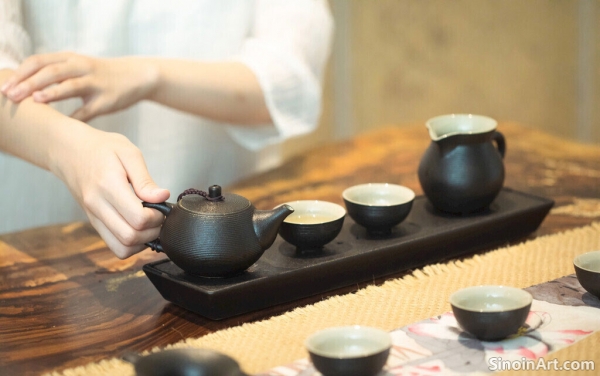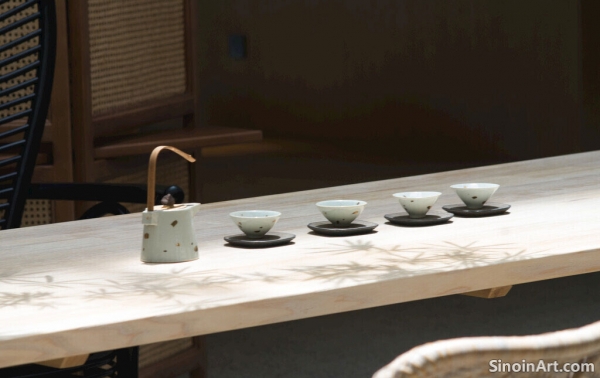The Tea Tray: Organization and Presentation
|
The tea tray is an often overlooked but essential element of a Chinese tea set. It serves as the foundation upon which the various pieces of teaware are arranged and presented, playing a crucial role in both the organization and presentation of the tea brewing experience. It also provides a physical space for the tea set, allowing for easy movement and use.  Tea trays come in various shapes, sizes, and materials. Common materials include wood, bamboo, ceramic, and metal. The material and design of the tea tray often reflect the taste of the tea drinker. The material is chosen for both its durability and its aesthetic qualities.  The design of the tea tray is both practical and decorative. They often feature designated slots or areas for different teaware items, keeping the tea set organized and easy to use. The various elements of the tea set are carefully displayed on the tray, which adds to its overall presentation.  A tea tray also serves a functional purpose, catching any spills or splashes of water during tea brewing, preventing damage to the table surface. It helps keep the tea area clean and tidy, which is an important consideration in traditional Chinese tea ceremonies. The tea tray’s role in presenting and organizing teaware elevates the tea experience, emphasizing the importance of both practical and aesthetic considerations. It helps to create a peaceful and harmonious environment, and also has its own aesthetic appeal. The tea tray is a vital part of the experience of drinking Chinese tea. |
Tag : Chinese Tea Tray, Tea Presentation, Tea Ceremony, Tea Utensils, Tea Accessories
Related information
- The Future of Chinese Tea: Sustainability and Modern Innovations
- The Art of Selecting Teaware: Personal Taste and Function
- Tea and Health: Exploring the Wellness Benefits of Chinese Tea
- The Art of Tea Pairing: Complementing Chinese Cuisine
- The Art of Gongfu Cha: The Traditional Chinese Tea Ceremony
This article discusses the future of Chinese tea, addressing issues of sustainability, ethical practices, and innovative technologies that are shaping the tea industry for future generations.
This article provides guidance on selecting Chinese teaware, emphasizing the importance of considering personal taste, intended usage, and the specific qualities of different materials and designs.
This article examines the various health benefits associated with drinking Chinese tea, discussing its antioxidant properties, potential impact on cardiovascular health, and its overall contribution to well-being.
Explore the art of tea pairing within the context of Chinese cuisine. Learn which teas best complement different dishes and how the right tea can enhance the overall dining experience.
This article delves into the details of Gongfu Cha, the traditional Chinese tea ceremony, explaining its history, techniques, and the cultural values it represents.